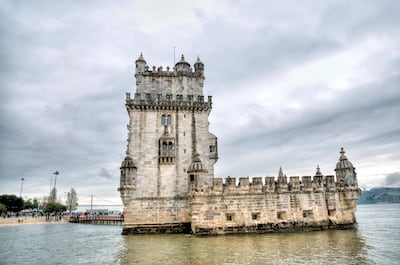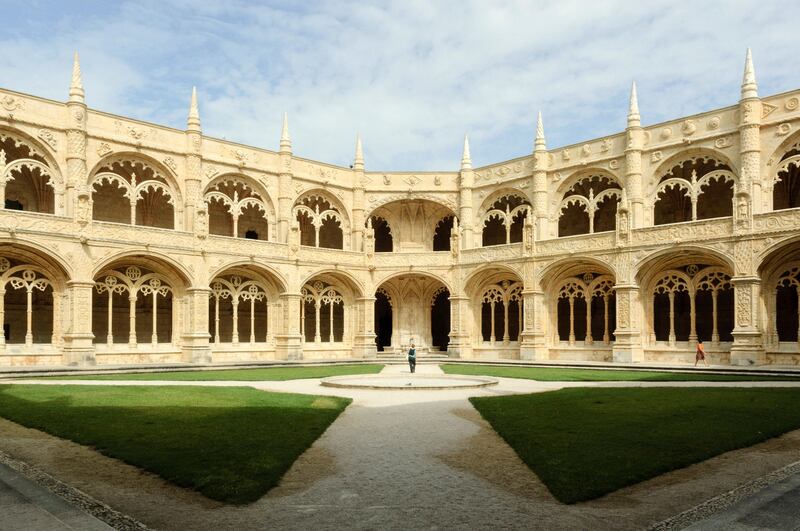Why Belém?
In a gorgeous spot by the riverside, Belém is where Lisbon's historic side shines through the most. The devastating earthquake of 1755 that left large parts of the city in ruins barely touched Belém, and left behind are some of the grandest monuments from Portugal's golden age of discovery.
It also hoards the highlights of Lisbon's cultural collection – an impressive number of museums are concentrated in the area. And, as such, it's full of day-trippers coming from the city centre, then disappearing again at the end of the day.
This could, in theory, give Belém a rather soulless, empty feel. But recent, defiantly modern additions have brought contemporary energy. There is now life between the big attractions, and the beauty has recovered its heartbeat.

A comfortable bed
The best address in the area is the riverside Altis Belém (www.altishotels.com), an ambitiously sleek and blocky modern building which houses a reputable spa as well as a Michelin-starred restaurant. Rooms come with big and bold individually-designed murals, plus balconies either overlooking the gardens or the river. Prices start at €230 (Dh925).
The Jeronimos 8 (www.jeronimos8.com) has design leanings, with furniture that makes self-conscious statements, black leather headboards and a sprawling open-plan lobby. It's the sort of place that shows signs of wear, but asserts a modern character without feeling generic. Doubles cost from €170 (Dh684).
For something a little quirkier, it is possible to stay in boats that have been decked out as apartments via Airbnb (www.airbnb.com). One option – called Boat At Lisbon – comes with dining room, kitchenette and, if desired, sailing tours from €81 (Dh326).
Find your feet
The unmissable star of Belém is the 16th-century JerónimosMonastery (www.mosteirojeronimos.pt), which is the high point of the Manueline gothic architectural style. The cloisters are visually sumptuous and packed with little detail, while there are several art and history exhibits in the rooms surrounding them.
Inside the monastery, but with a separate entrance, is the Maritime Museum (ccm.marinha.pt). The dull part of the museum is brimming with military costumes, model ships and parts of old ships. Mercifully, before that, there's the really interesting section on Portuguese exploration and how it changed the world. It charts the voyages of 15th and 16th century sailors, and the goods they brought home with them from Asia, Africa and South America. It also has some brilliant old maps, drawn when half the world was still a mystery.
From there, saunter over to the Torre de Belém (www.torrebelem.pt), the Manueline fortress from 1515 guards the river while looking rather like a giant chess piece. The views from the top are fab.

Meet the locals
Lisbon's two great football clubs are Sporting and Benfica, but down in Belém, the support goes to neither. Plucky, perennially hopeless Belenenses play just up the hill from the waterfront at the Estádio do Restelo, where the atmosphere tends to be passionate but grounded.
Book a table
Enoteca de Belém (www.travessadaermida.com) is a seven table joint found on a sidestreet, with a barick barrel-vaulted ceiling and fine dining aspirations. Amuse bouches are brought out between courses, and the €18 (Dh73) beef tenderloin with potato gratin, onion and Portobello mushroom is tremendous.
The Espaco Espelho d' água (espacoespelhodeagua.com) is typical of the new Belém. Part art galley, part cafe, it has deckchairs by pools outside, and a fresh, seafood-heavy menu, with dishes such as grouper with chestnut and olive crust for €17 (Dh69).
Shopper’s paradise
The Cultural Centre of Belém (www.ccb.pt) was built for Portugal's hosting of the European Union presidency in 1992, and is primarily an art and theatre space, but the complex also hosts some excellent shops and galleries.
Towards the rear, Hangar is largely a home decor store, but does a lovely range of colourful bags, trinket boxes, shawls and high-end locally-made toiletries. The shopping star here, though, is Margarida Pimentel's jewellery. Billed as "where jewellery meets art", everything on display is exquisitely curvaceous and memorably non-generic. None of it comes cheap, but every item is a statement piece.
What to avoid
There seems to be some sort of tourist law that states you have to eat a traditional custard tart from the Confeitaria Nacional (www.confeitarianacional.com). It would be churlish to suggest that these tarts are anything other than quite good, but they are not worth the ridiculously long queues.
Don’t miss
The Cultural Centre of Belém's highlight is the Museu Coleção Berardo (www.museuberardo.pt), which houses business mogul José Berardo's top drawer collection of modern and contemporary art. Warhol, Man Ray, Pollock, Vasarely and Picasso are all represented, but what makes it a must visit for the uninitiated, is the way the works are broken down into various artistic movements. This makes it a lot easier to tell the differences between, for example, pop art, op art, abstract impressionism and cubism.
Getting there
Emirates (www.emirates.com) flies direct from Dubai to Lisbon. Economy class returns cost from Dh3,500.
_______________
Read more:
[ Smart Shopper: Lo and behold Lisbon ]
[ My Kind of Place: Lagos, Portugal ]
[ My Kind of Place: Tavira, Portugal ]
_______________





